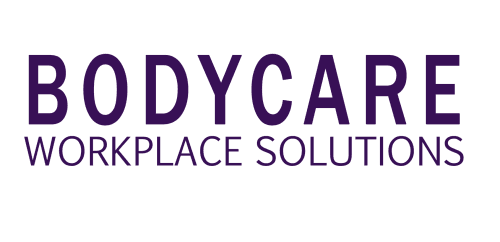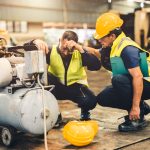Audiometric Testing Compliance Requirements
Reviewed by Dr. Mashood Khan, Head of Clinical Governance
Workplace health surveillance offers numerous advantages. It allows early detection of work-related illnesses, enabling prompt intervention and treatment which in turn helps identify, understand, and control occupational hazards, and ensures a safe working environment. Monitoring employees’ health promotes preventive measures, reducing absenteeism and improving productivity. Health surveillance programs can also assess the effectiveness of health and safety measures, leading to continuous improvement. Overall, workplace health surveillance safeguards employees’ well-being, fosters a culture of safety, and contributes to the overall success and sustainability of organisations.
In Australia, certain industries and workplaces are required by law to conduct regular audiometric testing for employees. This is because employees across several occupations including mining, manufacturing, construction, and aviation are at an increased risk of suffering from noise-induced hearing loss. Here, we explain the current compliance requirements and provide guidance for employers to ensure they are meeting their legal obligations.
What is audiometric testing (hearing testing)?
Workplace hearing testing is a specialised service that measures the hearing threshold of a person and helps to identify noise-induced hearing loss in employees. These hearing assessments are a screening tool used to evaluate an employee’s hearing abilities by measuring the sensitivity of a person’s hearing at various frequencies and intensities. It involves conducting specified hearing tests in a controlled environment.
The results of the testing can be used to establish a baseline of hearing ability for each employee, and future audiometric testing will monitor any changes to this baseline over time. This makes audiometric testing a useful preventative measure for keeping any signs of hearing damage or loss in check.
Why is hearing testing important in the workplace?
Hazardous noise can destroy the ability to hear clearly, which impairs communication and can be destructive to livelihood. The inability to hear clearly can also make it difficult to hear the sounds necessary for working safely, such as instructions or warning signals, increasing the risk of further injury (Safe Work Australia). The extent to which noise is hazardous not only depends on how loud it is (as measured by decibels) but on the duration of the exposure and its persistence at low levels.
All these factors make hearing testing vital in ensuring levels of noise are not chronically interfering with the concentration, communication, and well-being of employees. It also helps direct attention to potential noise stress in employees and helps employers take further measures to control risks by:
- Identifying which workers are most at risk of exposure and hearing damage
- Determining what sources and processes are causing that risk
- Identifying if and what kind of control measures should be adjusted or implemented
- Checking the effectiveness of existing control measures.
What are the current legal requirements around workplace hearing testing?
Work Health and Safety (WHS) Regulations were recently nationally harmonised to provide uniformity across expectations for noise and hearing testing across Australian workplaces. This move recognises the crucial nature of hearing monitoring and reducing the number of noise-induced hearing loss claims.
Testing types and requirements may vary slightly across states and industries. However, the overarching WHS regulations place a duty on persons conducting a business or undertaking (PCBUs) to provide hearing testing for employees who are frequently required to use personal protective equipment (PPE) to protect them from the risk of hearing loss associated with noise that exceeds the exposure standard.
The PCBU who provides the PPE as a control measure must provide hearing testing:
- Within three months of the worker commencing the work; and
- in any event, at least every 2 years.
Hearing testing will be mandatory for employees requiring hearing protection when Regulation 58 is enforced in April 2024 (WorkSafe).
What are the most common challenges in complying with hearing testing?
Meeting hearing testing compliance requirements can pose challenges for some employers. Some common hurdles include:
- A lack of awareness around the potential risks associated with noise exposure, or even the legal obligations around hearing testing
- Resource constraints in terms of conducting the hearing assessment, which requires specialised equipment, trained personnel and appropriate facilities
- Trouble obtaining employees’ participation and cooperation in the testing process, especially when they perceive it as time-consuming or unnecessary.
Bodycare and its Allied Health Practitioners are here to help workplaces overcome any knowledge-based, logistical, scheduling or resource-related obstacles that workplace hearing testing might present. We do this by educating people on the importance of hearing testing, providing advice on how to engage employees in the testing process and performing the tests in an efficient and cost-effective manner. On average, workplace hearing tests take about 20 minutes per employee to complete.
How often should hearing testing take place to meet compliance requirements?
The level of noise exposure in your workplace and any localised regulations will dictate the frequency of hearing tests for employees. By the national standard, hearing tests will be required at least every two years where employees are exposed to levels at or above 85 decibels, or where they regularly require hearing protection. If there are any changes in workplace noise exposure or discrepancies in an employee’s baseline hearing ability, more frequent testing may be necessary.
How can employers stay up to date on changing compliance requirements?
Legislation and compliance requirements can change over time, so it is important for employers to stay up to date by monitoring industry-specific regulations. Consulting the occupational health and safety professionals at Bodycare can help you take the guesswork out of understanding the current compliance requirements and any updates that may impact your industry.
Why choose Bodycare for workplace hearing testing?
Bodycare is the preferred choice for workplace audiometric testing because of our commitment to providing a comprehensive and high-quality service. Our Allied Health Practitioners are experienced in conducting hearing tests and are trained in the latest testing methods and technologies. This expertise ensures our test results are accurate and dependable and promotes employee health and well-being.
If fifteen or more employees are assessed, employers may receive a comprehensive corporate report summarising the overall results and any trends or areas of concern.
Another reason to choose Bodycare is our robust clinical governance framework. We take quality control seriously and have a system of checks and balances that ensures our service delivery’s consistency and accuracy. This includes ongoing training and education for our staff, regular audits of our processes and procedures, and continuous monitoring of our service outcomes.
Make hearing testing an integral part of your workplace safety program by contacting Bodycare today.
Sources



